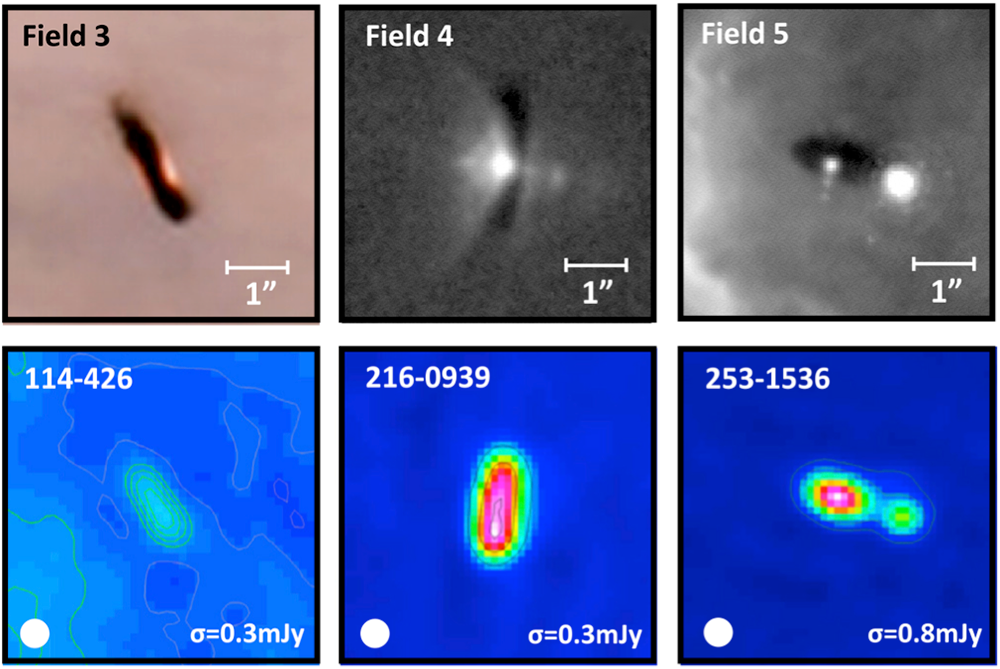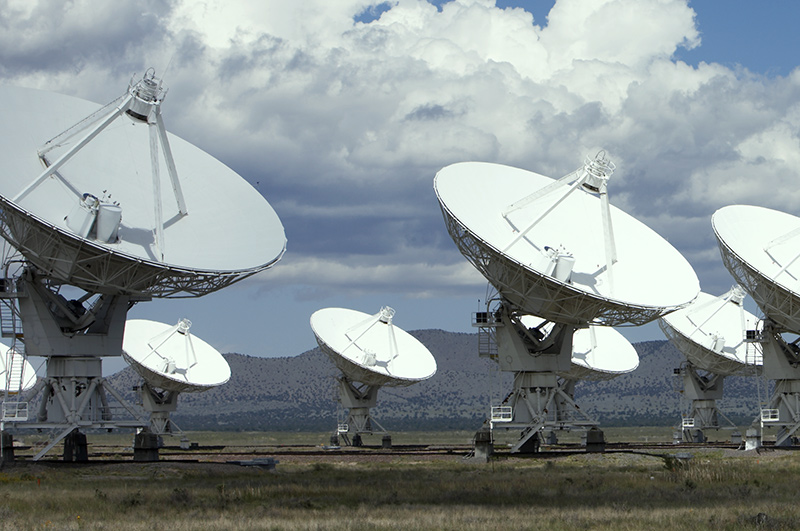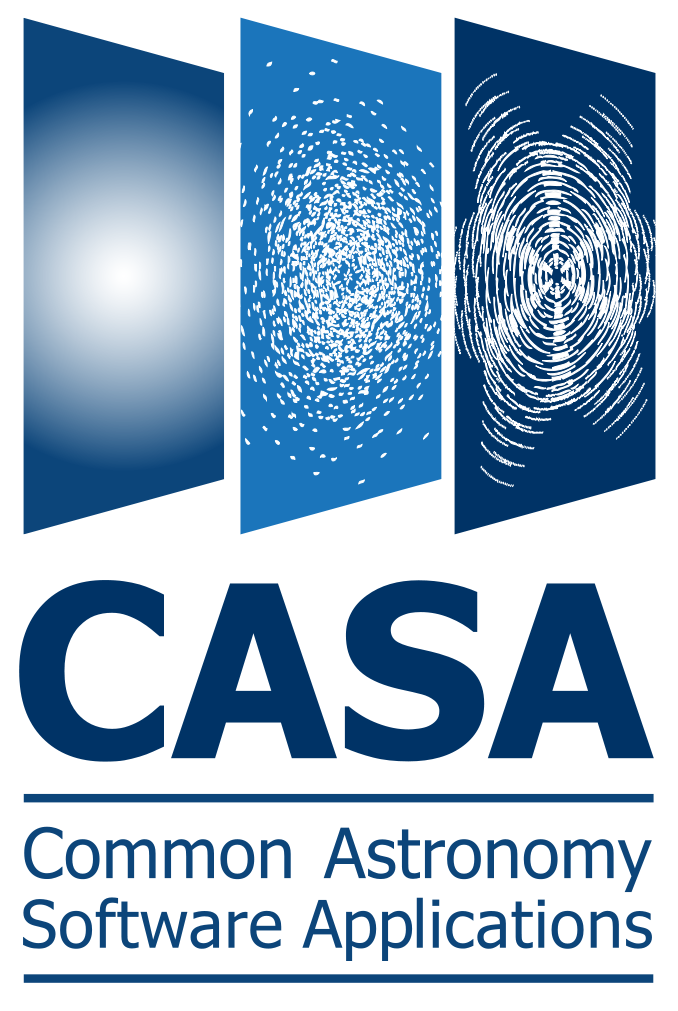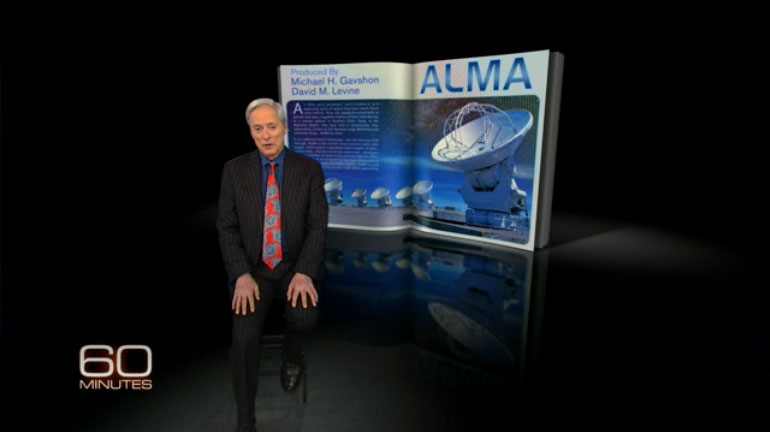NRAO eNews
Volume 7, Issue 4
26 March 2014
NRAO eNews
Volume 7, Issue 4 • 26 March 2014

Upcoming Events

2014 NRAO Postdoc Symposium
Apr 07 - 08, 2014 | Charlottesville, VA

2014 Synthesis Imaging Workshop
May 13 - 20, 2014 | Socorro, NM

3rd China-U.S. Workshop on Radio Astronomy Science and Technology
May 19 - 21, 2014 | Green Bank, WV

69th International Symposium on Molecular Spectroscopy
Jun 16 - 20, 2014 | Champaign-Urbana, IL

Transformational Science in the ALMA Era: Multi-Wavelength Studies of Galaxy Evolution
Aug 04 - 07, 2014 | Charlottesville, VA

Revolution in Astronomy with ALMA - The Third Year
Dec 08 - 11, 2014 | Tokyo, Japan
Revolution in Astronomy with ALMA - The Third Year

December 8 - 11, 2014
Tokyo International Forum, Tokyo, Japan
The Atacama Large Millimeter/submillimeter Array (ALMA) has been producing a growing number of impressive and transformational science results as the most powerful mm/submm interferometer in the world. The aim of this four-day conference, held in central Tokyo, is to highlight the science results from ALMA obtained during the first three years of science operations.
The science topics include all fields of astronomy: cosmology and galaxies in the distant Universe, nearby galaxies and the Galactic Center, ISM and star formation in our own galaxy, astrochemistry, circumstellar disks, exoplanets, solar system, stellar evolution, solar physics, and fundamental physics.
This conference will feature invited/contributed talks, poster sessions, and an optional full day excursion. Young researchers and students are particularly encouraged to attend the meeting.
Please visit the preliminary conference website. More information will be added as the conference dates approach.
Conference Timeline
2nd circular (registration begins): Early-mid May 2014
Registration deadline for oral contributions: Late August
Registration deadline for poster contribution/attendance only, and payment: Late October
Public Talk: 7 December 2014
Conference: 8 -11 December
Excursion: 12 December
Questions and comments should be sent to info@almasc2014.jp
SOC Chair: Ken Tatematsu (NAOJ)
LOC Chair: Daisuke Iono (NAOJ)
Circumstellar Disk Depletion in Young Orion Nebula Stars

Examples of HST (top row) and ALMA (bottom row) images of proplyds in the Orion Nebula Cluster.
[click to enlarge]
In a recent study of the Orion Nebula Cluster (ONC), Rita Mann and her collaborators obtained ALMA 856μm observations of a sample of protoplanetary disks to measure the amount of disk material available for forming planets. These protoplanetary disks, or proplyds, have a characteristic tear drop shape, with a bright head facing the nearby O6 star θ1 Ori C, and a tail extended radially away from the star – the shape of the proplyds reflects the intense environment in which they reside.
The team targeted 22 HST-identified proplyds, as well as 26 stars with no prior evidence of disks. Twenty-one proplyds and 2 stars in the supplemental sample were detected (see Figure for examples), with disk masses ranging from 0.3 to 79 Jupiter masses. The authors combine their new ALMA data with published submillimeter measurements of additional young stars in the ONC and show that the disk masses associated with these stars decrease with decreasing distance from θ1 Ori C. They conclude that photoevaporative mass loss driven by UV radiation from θ1 Ori C induces stars in its vicinity to lose disk mass at enhanced rates. As a result, stars near the massive O star are less likely to retain the material needed for planet formation.
Reference
ALMA Observations of the Orion Proplyds, Rita K. Mann, James D. Francesco, Doug Johnstone, Sean M. Andrews, Jonathan P. Williams, John Bally, Luca Ricci, A. Meredith Hughes, Brenda C. Matthews, 2014 ApJ, in press.
ALMA Project Status
Cycle 1 Science Observing
A Cycle 1 Status Report has been produced by the Joint ALMA Observatory (JAO) with contributions from the North American, East Asian, and European ALMA Regional Centers (ARCs) and published at the ALMA Science Portal. It describes the current status of Cycle 1, the progress in observing the 196 approved Cycle 1 projects, the state of data reduction for these projects, the 2014 ALMA configuration schedule, and an analysis of the expected project completion likelihood.
Overall, ALMA has thus far obtained 544 successful Cycle 1 executions (12-m Array and 7-m Array observations), or 36% of the estimated 1500 needed for Cycle 1 High Priority projects. The time from completion of data acquisition to PI data delivery has been reduced by nearly a factor of three since Cycle 0.
Science observations resumed earlier than expected owing to favorable conditions during the latter part of the austral summer. Stable power and a newly implemented remote power restart and recovery capability were contributors. Beginning in April, the tempo of science observing will increase, with two weeks of science time scheduled for every week of commissioning. At the end of Cycle 1 on 31 May 2014, it is predicted that 338 hours of Cycle 1 High Priority projects will remain unobserved and will need to be transferred into Cycle 2. Therefore, about 1700 hours will be available for High Priority Cycle 2 proposals. Details may be found in the Status Report.
Cycle 2 Science Preparation & Commissioning
The Cycle 2 science assessment process is concluding. The 78 reviewers attending a meeting in London, Ontario finished their evaluations of the 1381 proposals that sought 7000+ ALMA observing hours. Proposers will be informed of the outcome in the first weeks of April 2014. Cycle 2 observations will begin in June 2014, with the array in an extended configuration.
ALMA commissioning will focus on validation of the Cycle 2 online observing software and dealing with residual issues in single dish observing modes. The array is currently configured in a pattern close to C32-3 and will be expanding during the coming months. Recently, correlation was achieved between 53 antennas for a total of 1378 baselines using the 64-antenna correlator. The newly installed Band 10 (350 micron) receivers were used in an initial test observation (22 antennas are currently outfitted with this future capability).
ALMA Development Projects
The ALMA Board met in Santiago in mid-March. Among other actions, they approved the program of ALMA Development Projects proposed by the North American partnership and described in last month’s eNews. These Projects offer a first step towards construction of a prototype receiver for the 4mm window, construction of a new subarray, an upgrade to the ALMA 3mm receivers, and software to foster easier access and improved visualization for ALMA archive data.
A program of Studies for ALMA Development was approved earlier. North America anticipates issuing a new Call for Studies of Proposed Development Upgrades of the Atacama Large Millimeter/submillimeter Array in about six months.
Transitions
Stuartt Corder was appointed by the ALMA Board as interim ALMA Deputy Director for a period of 2 years, effective 1 January 2014. A new group, called "Extension and Optimization of Capabilities," has been formed to lead and increase ALMA's instrumental opportunities. Anthony Remijan will lead this group, holding the title of Program Scientist (Extension and Optimization). Catherine Vlahakis will become Deputy Program Scientist (Extension and Optimization), effective 24 March 2014 for 18 months.
VLA Sky Survey (VLASS) Update

[click to enlarge]
The VLASS Survey Science Group (SSG) is currently developing the science case and definition of the VLA Sky Survey (VLASS). A number of Science Working Groups (SWGs) have been established to constitute the forum for these discussions. The initial set of SWG categories are: Programmatics, Galactic, Extragalactic, Transients and Variables, Technical, and Communication / Education / Outreach.
All interested community members are encouraged to join one or more SWG through discussions on or through lists linked to our SWG Science Forums. See the SSG webpage for details regarding the SSG, the SWG, the Forums, and the process for contributing to the discussions.
To continue to receive the latest updates and information about the VLASS, please register on-line. Questions and comments can also be directed to vlass@nrao.edu
VEGAS Released for Shared Risk Science

[click to enlarge]
NRAO-Green Bank is pleased to announce the release of the Versatile GBT Astronomical Spectrometer (VEGAS) for shared risk science. VEGAS is the next generation spectrometer for the GBT. It has larger bandwidths, more spectral windows, better dynamic range, higher time resolution, and better support for multi-beam instruments than the current suite of spectral line backends at the GBT.
The accompanying figure demonstrates some of these capabilities: it shows 42 spectra, taken with 7 beams of the K-band Focal Plane Array (KFPA), of the ammonia lines in the Galactic HII region W3. Previously, the KFPA was limited to 1 spectral window per beam when all seven beams were used. Now VEGAS can provide up to 8 spectral windows to all seven beams simultaneously. Note that some of the spectral windows in the figure were deliberately tuned to the same frequency and that the full complement of spectral windows was not available due to an intermittent problem with one bank.
The first shared risk science users arrived 10 March and are working with scientific staff to set up, test, and debug their observations. VEGAS will be the default spectral line backend for NRAO Semester 2014B observations. Please contact the NRAO-Green Bank scientific staff if you have any questions about VEGAS capabilities.
VEGAS was built by the CICADA collaboration, which includes NRAO-Green Bank and the Center for Astronomy Signal Processing and Electronics Research (CASPER) at the University of California, Berkeley. VEGAS was funded by the National Science Foundation – Advanced Technologies and Instrumentation (NSF-ATI) program (Award Number: 1006509, PI: Dan Werthimer). Additional information is available at the VEGAS web page.
CASA 4.2.0 Available for Linux

The Common Astronomy Software Applications (CASA) package is the offline data reduction and analysis package for ALMA and VLA data developed jointly by NRAO, the European Southern Observatory (ESO), and the National Astronomical Observatory of Japan (NAOJ).
CASA 4.2.0 for Linux can be downloaded from the CASA homepage. Follow the "Obtaining CASA" link. A Mac OS version will be available at a later date.
Improvements for CASA 4.2.0 include:
- support for outlier fields in all imaging modes
- ephemeris support
- frequency dependent primary beams usage for mosaics
- clip flagging based on data weights
- improvements to casafeather, including, radial plots, logarithmic axes, support for dirty data cube
- time variability support for VLA flux calibrators, and low frequency Scaife and Heald flux models
- multi-band delay solutions
- full support for bandpass calibrators with a spectral slope
- simalma algorithm improvements
- new tasks spxfit and rmfit for spectral index and rotation measure computation
- new image management for the viewer
- autocalculation of image parameters in sdimaging
- mask weights in sdimaging
A complete list of the CASA 4.2.0 improvements is provided in the Release Notes on the CASA homepage. If you have any questions, please consult the NRAO helpdesk or the ALMA helpdesk for ALMA-related questions. The on-line CASA discussion forum is also a valuable resource.
2014 NRAO Postdoc Symposium

The 10th annual NRAO Postdoctoral Science Symposium will be held on Monday-Tuesday, 7-8 April 2014 at the National Radio Astronomy Observatory in Charlottesville, Virginia. The annual symposium brings together the resident and non-resident Jansky Fellows and NRAO postdocs to highlight their current research, share ideas, and establish collaborations. Local NRAO scientific and engineering staff is also invited to attend.
We are pleased to have Dr. Andrew Baker, a former Jansky Fellow and a professor at Rutgers University, as our Keynote Speaker this year.
Additional program details will soon be available online.
ALMA Featured in Major Media

[click to enlarge]
A lengthy and well-produced program segment titled “ALMA: Peering Into Our Universe’s Past,” was initially broadcast in the US on the popular CBS News program 60 Minutes on Sunday evening, 9 March 2014. The 60 Minutes program is among the most successful in US television history, and the audience for the ALMA segment was measured to be 10.6 million viewers. This excellent ALMA program is available for repeat viewing at the CBS News website.
Special thanks to NRAO press officer Charles Blue for shepherding this program to completion, as well as to our NAASC and NRAO/AUI-Chile scientists and staff – several of whom appear on-camera in the 60 Minutes segment – and to the NRAO Education & Public Outreach media team.
ALMA was also featured in the April edition of National Geographic magazine. NRAO arranged, with kind assistance from the Joint ALMA Observatory (JAO), for a photographer to spend a month at the ALMA site in northern Chile, and for the writer to visit. An online version of the article includes excellent time lapse video. Additional photos are also online. You may need to register (free) at the National Geographic web site to see this content.
Recent Media Releases
 |
NRAO Media Tip Sheet
|
 |
‘Death Stars’ in Orion Blast Planets Before They Even Form A team of astronomers from Canada and the United States has used ALMA to study the often deadly relationship between highly luminous O-type stars and nearby protostars in the Orion Nebula. Read more… |
 |
ALMA Sees Icy Wreckage in Nearby Solar System Astronomers using the ALMA telescope have discovered the splattered remains of comets colliding together around a nearby star; the researchers believe they are witnessing the total destruction of one of these icy bodies once every five minutes. Read More … |
Career Opportunities
New Postings
Telescope Mechanic I: The NRAO in Socorro, NM is accepting applicants for a Telescope Mechanic position to join engineering services. Under general supervision, responsibilities include performing tasks associated with maintenance and servicing radio telescope mechanical components.
Systems Administrator I: The NRAO is seeking a Systems Administrator to develop, maintain, and support the Associated Universities, Inc./National Radio Astronomy Observatory (NRAO) business software, Oracle J.D. Edwards Enterprise One (JDE E1). Support role for all other JDE E1 areas include but are not limited to NRAO custom Electronic TimeKeeping, Human Resources, Payroll, management report design and development, JDE Security, Cost Pools, develop/direct user training, documentation/training manuals, and MIS Help Desk support/logging. Location of the position may be in Socorro, NM, Charlottesville, VA or Green Bank, WV.
Mechanical Engineer II: The NRAO in Socorro, NM is accepting applications for a Mechanical Engineer II responsible for carrying out and assisting in engineering analysis, design, and general execution of a project or whole system. Responsibilities include recommendations, coordination and assisting in decisions on such aspects as design, procurement, manufacture, erection, test and some degree of initial operation.
Head of the ALMA Department of Engineering (ADE): The Joint ALMA Observatory (JAO) in Santiago, Chile is recruiting for a Head of the ALMA Department of Engineering. The incumbent will be responsible for the management and leadership of the department, for the engineering and technical staff within the JAO and for the work outcomes from those staff including Systems Integration efforts, the ongoing engineering operations of the array and overall maintenance issues. The term of appointment is three years.
From the Archives
Ellen Bouton

[click to enlarge]
About this month's photo: Paul Rhodes and Dewey Ross study first fringes with the Kitt Peak Very Long Baseline Array (VLBA) antenna. In early 1989, Kitt Peak AZ, the second of the VLBA antenna sites, had been outfitted and first light was observed on 21 February. First fringes, at 6 cm, were obtained on 9 March 1989 with the Pie Town, NM VLBA antenna and the Very Large Array.
From the Archives is an ongoing series illustrating NRAO and U.S. radio astronomy history via images selected from our collections of individuals' and institutional papers. If readers have images they believe would be of interest to the Archives, please contact Ellen Bouton, ebouton@nrao.edu.

